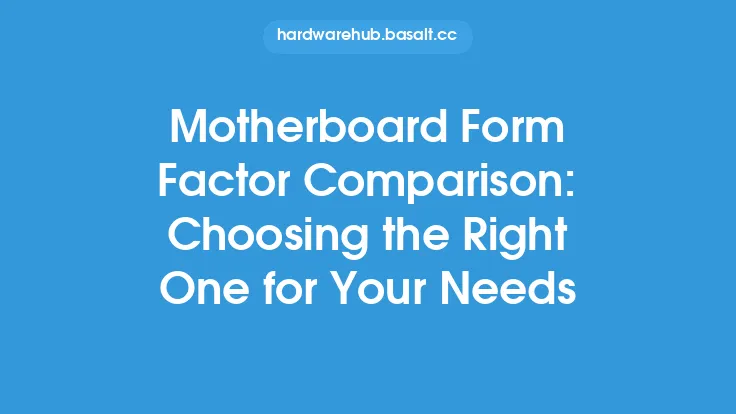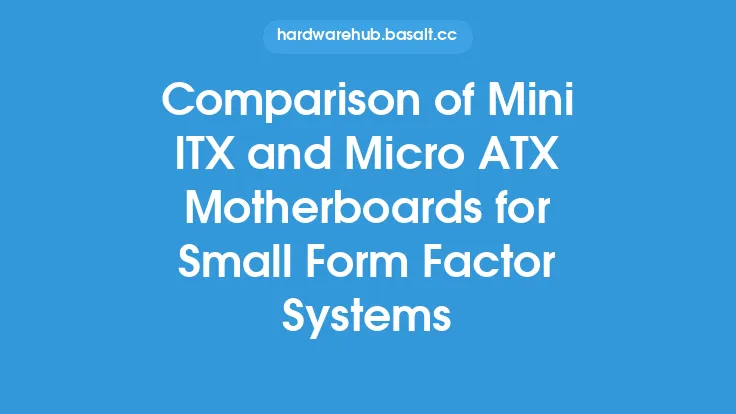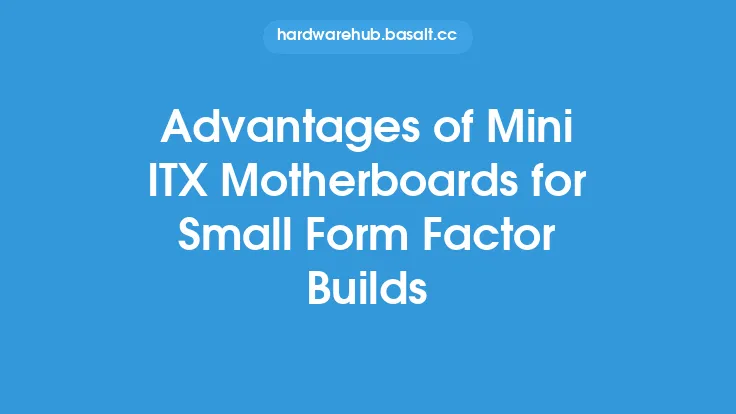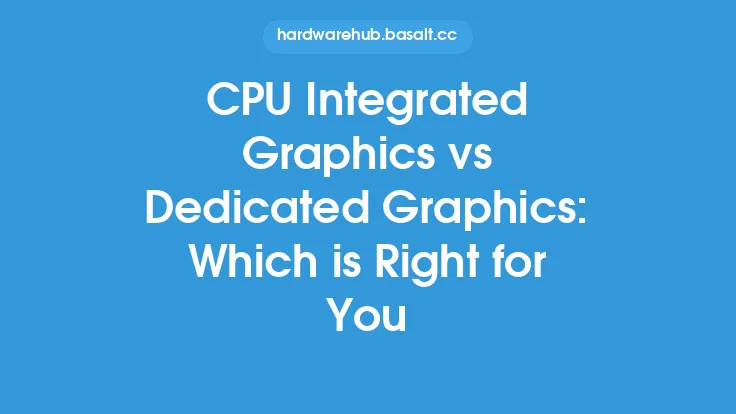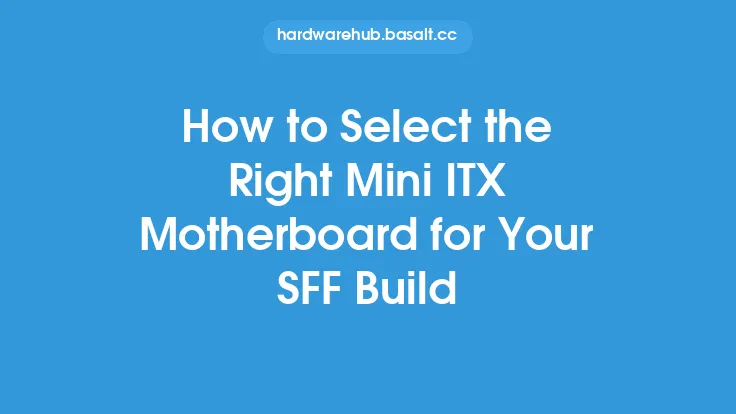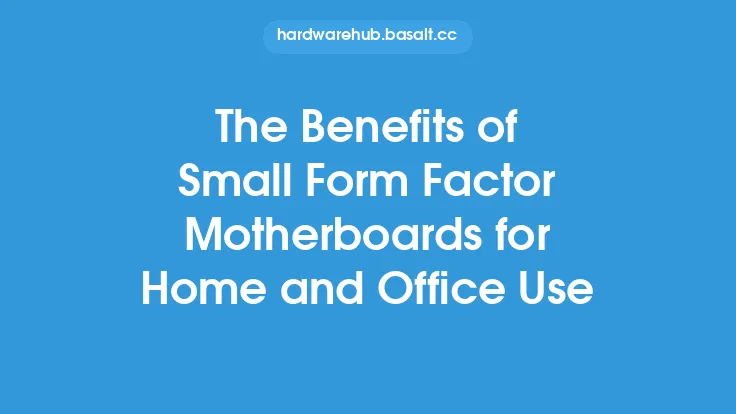When it comes to building a small form factor (SFF) computer, one of the most important decisions you'll make is choosing the right motherboard. Two popular options for SFF builds are Mini ITX and Mini DTX motherboards. While both offer a compact design, they have distinct differences in terms of size, features, and compatibility. In this article, we'll delve into the details of each form factor, exploring their strengths and weaknesses, to help you decide which one is right for your next build.
Introduction to Mini ITX Motherboards
Mini ITX motherboards are the most popular choice for SFF builds, measuring 6.7 inches (17 cm) square. This compact size makes them ideal for building small, portable computers, home theater PCs, and even gaming systems. Mini ITX motherboards typically feature a single PCIe x16 slot, which can accommodate a graphics card, and may include additional features like USB ports, SATA ports, and audio jacks. They often support a wide range of processors, including Intel Core and AMD Ryzen CPUs. One of the key advantages of Mini ITX motherboards is their extensive compatibility with cases and cooling systems, making it easy to find a suitable enclosure for your build.
Introduction to Mini DTX Motherboards
Mini DTX motherboards, on the other hand, measure 8 inches (20.3 cm) wide and 6.7 inches (17 cm) deep. While they are slightly larger than Mini ITX boards, they still offer a compact design that's suitable for SFF builds. Mini DTX motherboards often feature two PCIe x16 slots, which can accommodate multiple graphics cards or other expansion cards. They may also include additional features like more USB ports, SATA ports, and fan headers. Mini DTX motherboards typically support a wide range of processors, including Intel Core and AMD Ryzen CPUs. One of the key advantages of Mini DTX motherboards is their increased expandability, making them a great choice for users who need more flexibility in their build.
Key Differences Between Mini ITX and Mini DTX Motherboards
When choosing between Mini ITX and Mini DTX motherboards, there are several key differences to consider. One of the main differences is the size, with Mini ITX motherboards being smaller and more compact. Mini ITX motherboards also tend to have fewer features and expansion options, while Mini DTX motherboards offer more flexibility and upgradeability. Another key difference is the power delivery, with Mini DTX motherboards often featuring more robust power delivery systems to support multiple graphics cards and other power-hungry components. In terms of compatibility, Mini ITX motherboards are generally more widely supported by cases and cooling systems, while Mini DTX motherboards may require more specialized enclosures.
Choosing the Right Motherboard for Your Build
When deciding between Mini ITX and Mini DTX motherboards, it's essential to consider your specific needs and goals. If you're building a small, portable computer or a home theater PC, a Mini ITX motherboard may be the better choice. They offer a compact design, low power consumption, and a wide range of compatibility with cases and cooling systems. On the other hand, if you're building a gaming system or a workstation that requires more expandability and flexibility, a Mini DTX motherboard may be the better option. They offer more PCIe slots, additional features, and a more robust power delivery system to support multiple graphics cards and other power-hungry components.
Technical Considerations
From a technical standpoint, both Mini ITX and Mini DTX motherboards offer a range of features and specifications to consider. When choosing a motherboard, it's essential to consider the chipset, which determines the board's features, compatibility, and performance. You should also consider the processor socket, which determines the type of CPU you can install. Additionally, consider the memory support, storage options, and expansion slots to ensure the motherboard meets your needs. Other technical considerations include the power phase design, voltage regulator modules, and cooling systems, which can all impact the motherboard's performance and reliability.
Conclusion
In conclusion, both Mini ITX and Mini DTX motherboards offer a range of benefits and drawbacks, and the right choice for your build will depend on your specific needs and goals. By considering the size, features, compatibility, and technical specifications of each form factor, you can make an informed decision and choose the best motherboard for your next SFF build. Whether you're building a small, portable computer or a powerful gaming system, there's a Mini ITX or Mini DTX motherboard out there that's right for you. By understanding the differences between these two form factors, you can create a system that's tailored to your needs, providing the perfect balance of performance, power consumption, and size.
